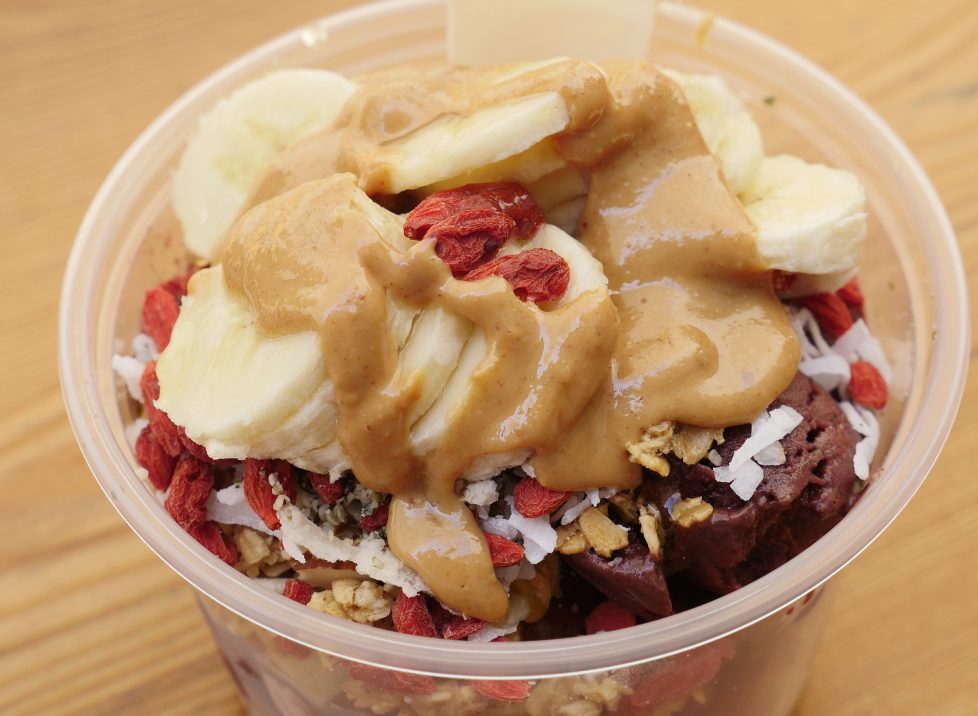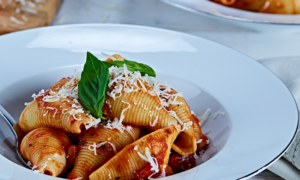Indulge in a vibrant culinary adventure as we embark on a journey to uncover the authentic flavors of Brazil. This South American country is renowned for its rich and diverse gastronomy, which showcases a fusion of indigenous, Portuguese, African, and immigrant influences. From the bustling streets of Sao Paulo to the serene beaches of Rio de Janeiro, Brazil offers a tantalizing array of dishes that will captivate your taste buds and leave you craving for more.
Savor the mouthwatering feijoada, a hearty black bean stew filled with succulent meats that is considered Brazil’s national dish. Or treat yourself to the iconic pão de queijo, delectable cheese bread rolls that are a popular snack across the country. And let’s not forget about the refreshing caipirinha, Brazil’s signature cocktail made with the vibrant flavors of lime and cachaça.
Experience the kaleidoscope of flavors that Brazil has to offer, from the exotic Amazonian fruits to the fiery spices of Bahian cuisine. So, join us as we explore the must-try foods of Brazil and immerse ourselves in the true essence of this captivating culinary world. Get ready to embark on a gastronomic adventure like no other.
Traditional Brazilian dishes
Brazilian cuisine is a melting pot of flavors, and the traditional dishes reflect the country’s rich cultural heritage. One such dish is the feijoada, a hearty black bean stew that is considered Brazil’s national dish. This slow-cooked delight is made with black beans, various cuts of pork, and beef, creating a flavorful and satisfying meal. The feijoada is often served with rice, collard greens, farofa (toasted cassava flour), and orange slices to balance the richness of the stew. Every bite of this dish is a celebration of Brazil’s culinary prowess.
Another traditional Brazilian dish that is worth trying is the moqueca. Originating from the northeastern state of Bahia, this seafood stew is a true reflection of the country’s coastal influences. The moqueca is made with fish or prawns, cooked in a fragrant broth made from coconut milk, onions, garlic, tomatoes, and palm oil. The flavors are bold, with a hint of spiciness, making it a perfect dish to warm the soul. Enjoy the moqueca with a side of rice and farofa, and you’ll be transported straight to the sunny beaches of Brazil.
When it comes to Brazilian cuisine, you can’t forget about the iconic dish called acarajé. This deep-fried ball of black-eyed pea dough is stuffed with a flavorful filling of shrimp, vatapá (a paste made from bread, shrimp, coconut milk, and spices), and caruru (a spicy okra and shrimp gumbo). Acarajé is a popular street food in Brazil, especially in the northeastern region. The combination of textures and flavors in this dish is truly remarkable, making it a must-try for any food lover visiting Brazil.
Regional specialties
Brazil is a vast country with diverse regional cuisines that offer their own unique specialties. In the state of Minas Gerais, for example, you’ll find the iconic pão de queijo, which translates to “cheese bread.” These small, puffy bread rolls are made with cassava flour and cheese, resulting in a delightful combination of chewiness and cheesiness. Pão de queijo is a beloved snack across Brazil, and you can find them in bakeries, cafes, and even on the breakfast table.
Moving to the southern region of Brazil, the churrasco takes center stage. Known for its barbecue culture, this region is famous for its mouthwatering grilled meats. The churrasco is a feast for meat lovers, featuring a variety of cuts cooked on skewers and served with chimichurri sauce. The meats are typically seasoned with rock salt and grilled to perfection over an open flame. Pair the churrasco with a cold beer, and you’ll experience a true taste of Brazilian barbecue.
The northeastern region of Brazil is known for its rich and vibrant cuisine, and one of the standout dishes is the bobó de camarão. This creamy shrimp stew is made with yuca (cassava) puree, coconut milk, palm oil, onions, garlic, and spices. The result is a luscious, flavorful dish that showcases the region’s Afro-Brazilian influences. The bobó de camarão is best enjoyed with a side of rice and farofa, allowing you to savor every spoonful of this exquisite dish.
Popular street foods in Brazil
Brazil’s street food scene is a culinary adventure in itself, offering a wide range of mouthwatering snacks and treats. One of the most popular street foods is the coxinha. Shaped like a chicken drumstick, this deep-fried snack is made with shredded chicken, coated in dough, and then breaded before frying. The result is a crispy, savory treat that is perfect for satisfying those mid-day cravings. Coxinhas can be found in street food stalls, bakeries, and even some restaurants throughout Brazil.
Another beloved street food in Brazil is the pastel. These deep-fried pastries come in a variety of fillings, such as cheese, meat, and heart of palm. The dough is crispy on the outside and soft on the inside, creating a delightful contrast of textures. Pastels are often enjoyed with a side of molho de pimenta, a spicy pepper sauce that adds an extra kick to the already flavorful filling. Whether you’re exploring the streets of Sao Paulo or Rio de Janeiro, you’re sure to come across a pastel vendor tempting you with their delicious offerings.
For those with a sweet tooth, brigadeiros are a must-try street food in Brazil. These bite-sized chocolate truffles are made with condensed milk, cocoa powder, butter, and sprinkles. Brigadeiros are the perfect indulgence, offering a rich and creamy chocolate experience in every bite. You can find them in sweet shops, food markets, and even at birthday parties across Brazil. Don’t miss the opportunity to try these little balls of happiness when you’re in the country.
Brazilian desserts and sweets
Brazilian cuisine is not complete without its delectable desserts and sweets. One such dessert that is loved by locals and visitors alike is the passion fruit mousse. Made with fresh passion fruit juice, condensed milk, and whipped cream, this dessert is light, tangy, and refreshing. The combination of flavors creates a tropical sensation that will transport you straight to the beaches of Brazil. Top it off with some grated chocolate or a sprinkle of passion fruit seeds for an extra touch of elegance.
Another iconic Brazilian sweet is the brigadeiro. Similar to the brigadeiros mentioned earlier, these are bite-sized chocolate truffles that are a staple at birthday parties and celebrations throughout Brazil. The traditional brigadeiro is made with condensed milk, cocoa powder, butter, and chocolate sprinkles. However, there are also variations that incorporate different flavors, such as coconut, peanut, or even fruit purees. Brigadeiros are incredibly addictive, and it’s hard to stop at just one.
If you’re in the mood for something a little more indulgent, try the pudim de leite condensado, which translates to “condensed milk pudding.” This creamy dessert is made with condensed milk, eggs, and caramel sauce, resulting in a velvety smooth pudding that melts in your mouth. The pudim de leite condensado is a classic Brazilian dessert that can be found in restaurants, bakeries, and even in home kitchens. It’s the perfect ending to a delicious meal.
Unique ingredients in Brazilian cooking
Brazilian cuisine is known for its use of unique and flavorful ingredients that are native to the country. One such ingredient is açaí, a small purple berry that grows in the Amazon rainforest. Açaí is rich in antioxidants and is often enjoyed as a refreshing smoothie or as a base for bowls topped with granola, fruits, and honey. This superfood has gained popularity worldwide for its health benefits and delicious taste.
Another unique ingredient in Brazilian cooking is dendê oil, also known as palm oil. This bright red oil is derived from the pulp of the fruit of the African oil palm tree and is commonly used in Bahian cuisine. Dendê oil adds a distinct flavor and vibrant color to dishes such as moqueca and acarajé. Its rich and nutty taste is a key component in creating the authentic flavors of Bahia.
One ingredient that is synonymous with Brazil is cachaça, a distilled spirit made from sugarcane juice. Cachaça is the main ingredient in Brazil’s national cocktail, the caipirinha. This refreshing drink is made by muddling lime wedges with sugar, adding cachaça, and then filling the glass with crushed ice. The caipirinha is the perfect way to cool down on a hot day and experience the vibrant flavors of Brazil.
Cooking techniques in Brazilian cuisine
Brazilian cuisine showcases a variety of cooking techniques that contribute to the unique flavors and textures of the dishes. One such technique is the use of churrasco, or barbecue, which involves grilling meats over an open flame. The slow cooking process allows the meats to develop a smoky flavor and tender texture, resulting in a mouthwatering dining experience.
Another cooking technique that is prominent in Brazilian cuisine is the process of slow cooking. This can be seen in dishes such as the feijoada and the bobó de camarão, where the ingredients are simmered for hours to develop rich flavors and tenderize the meats. Slow cooking is a labor of love that requires patience and attention to detail, but the end result is well worth the effort.
In addition to slow cooking, Brazilian cuisine also incorporates techniques such as frying, roasting, and stewing. Each technique adds its own dimension of flavor and texture to the dishes, creating a diverse and exciting culinary experience.
Brazilian food festivals and events
Brazil is a country that loves to celebrate its culinary heritage, and there are several food festivals and events that showcase the best of Brazilian cuisine. One such event is the São Paulo Food Festival, which brings together renowned chefs, food vendors, and food lovers from around the world. This festival celebrates the diversity of Brazilian cuisine, featuring a wide range of dishes, cooking demonstrations, and tasting sessions.
Another popular food festival in Brazil is the Festival de Cultura e Gastronomia de Tiradentes, held in the historic town of Tiradentes. This event celebrates the rich gastronomic traditions of the state of Minas Gerais, showcasing local ingredients, traditional dishes, and innovative culinary creations. The festival attracts visitors from all over Brazil and beyond, offering a unique opportunity to immerse oneself in the flavors and culture of the region.
In addition to these festivals, many cities in Brazil host weekly food markets, where local vendors gather to sell their homemade delicacies. These markets are a great way to experience the flavors of Brazil, as you can sample a variety of dishes and interact with the passionate food artisans who create them. Whether you’re in Rio de Janeiro, Salvador, or any other city in Brazil, be sure to check out the local food markets for an authentic culinary experience.
Recommended Brazilian restaurants
When it comes to experiencing the authentic flavors of Brazil, visiting local restaurants is a must. Here are a few recommended Brazilian restaurants that offer a true taste of the country:
1. Fogo de Chão (Various locations): This churrascaria chain is renowned for its all-you-can-eat meat feast. The waiters bring skewers of grilled meats to your table, allowing you to indulge in a variety of cuts and flavors. The Fogo de Chão experience is a carnivore’s dream come true.
2. Maní (São Paulo): This Michelin-starred restaurant combines Brazilian ingredients with international culinary techniques, resulting in a unique and innovative dining experience. The menu changes seasonally, ensuring that only the freshest and finest ingredients are used.
3. Confeitaria Colombo (Rio de Janeiro): This historic bakery and café is a true gem in the heart of Rio de Janeiro. With its stunning architecture and delicious pastries, it’s the perfect place to enjoy a cup of coffee and indulge in some Brazilian sweets.
4. Mocotó (São Paulo): This restaurant is a must-visit for anyone seeking authentic northeastern Brazilian cuisine. Mocotó offers a menu filled with traditional dishes such as bobó de camarão, feijoada, and tapioca. The flavors are bold, the portions are generous, and the atmosphere is lively.
These are just a few examples of the many incredible Brazilian restaurants that await you. Whether you’re in the mood for a fine dining experience or a casual meal at a local eatery, Brazil has something to offer every food lover.
Conclusion: Exploring the culinary delights of Brazil
As our culinary journey through Brazil comes to an end, we hope you’ve been inspired to explore the authentic flavors of this diverse and vibrant country. From the traditional dishes to the street foods, desserts, and unique ingredients, Brazil offers a culinary experience like no other.
So, pack your bags and get ready to embark on a gastronomic adventure that will tantalize your taste buds and leave you craving for more. Whether you’re savoring a bowl of feijoada, indulging in a pastel on the streets of Sao Paulo, or enjoying a caipirinha at a beachside bar, each bite will transport you to the heart and soul of Brazil.
Remember, the true essence of Brazilian cuisine lies in its rich cultural heritage, its fusion of flavors, and its passion for food. So, go ahead and discover the authentic flavors of Brazil – your taste buds will thank you.





















